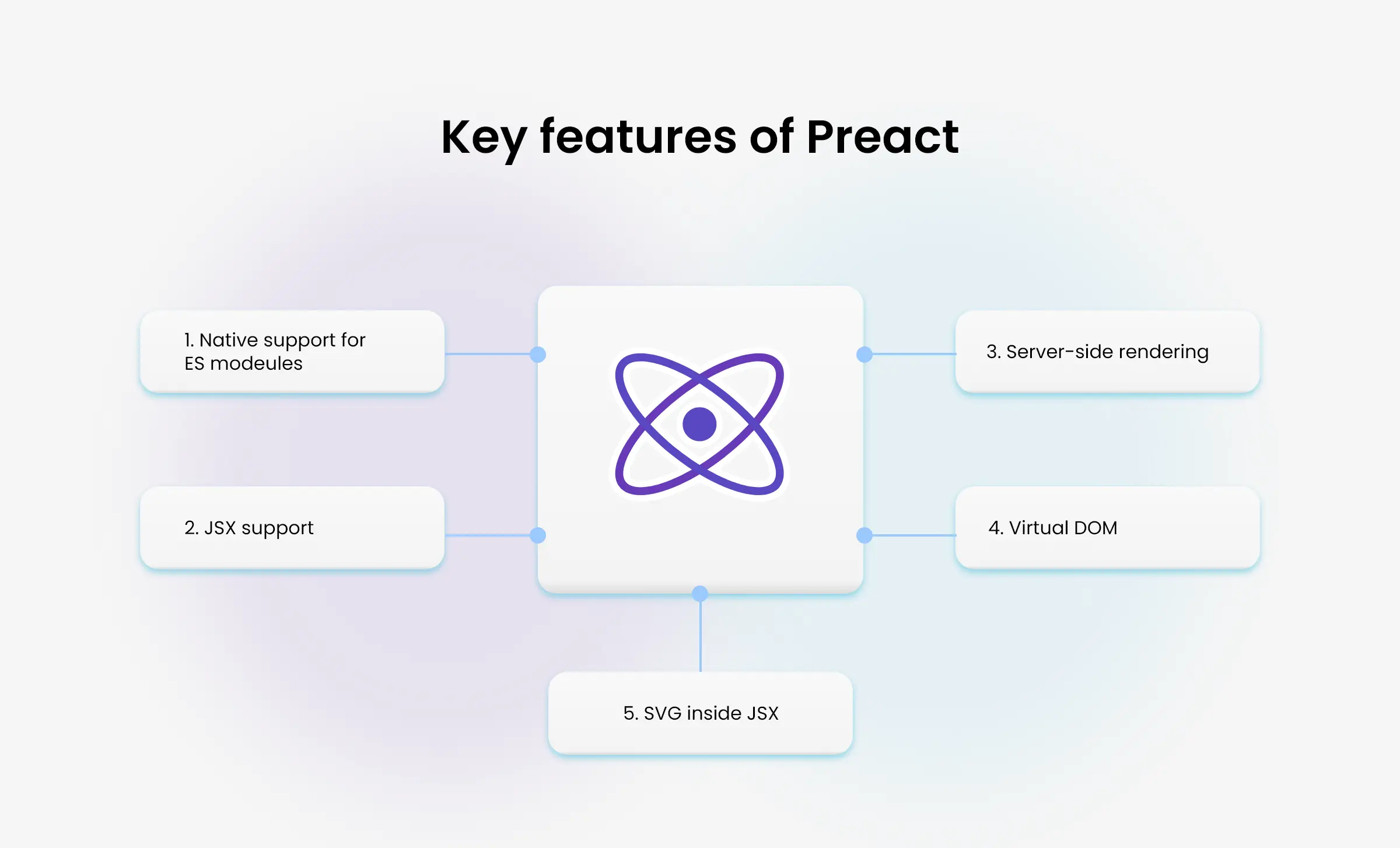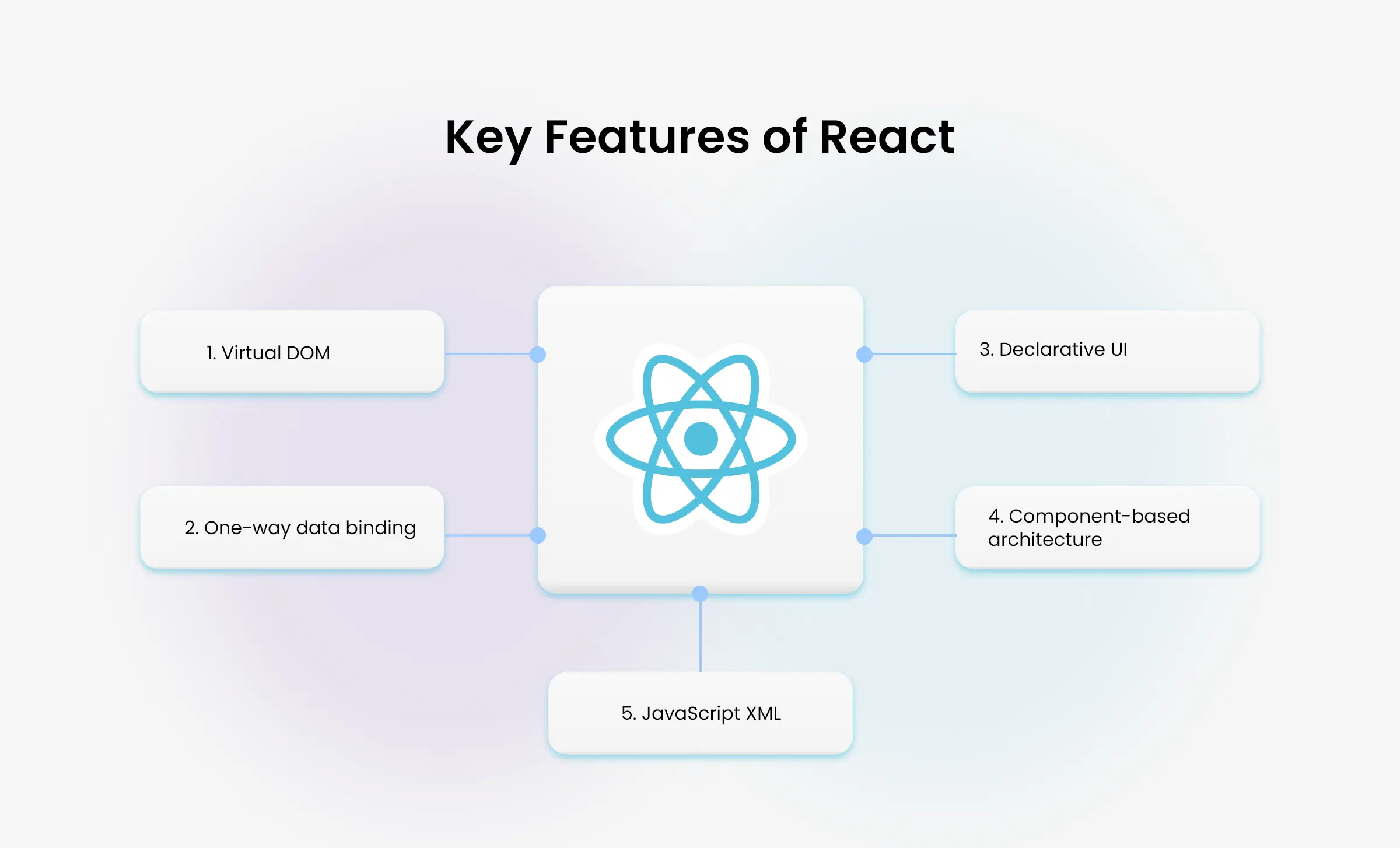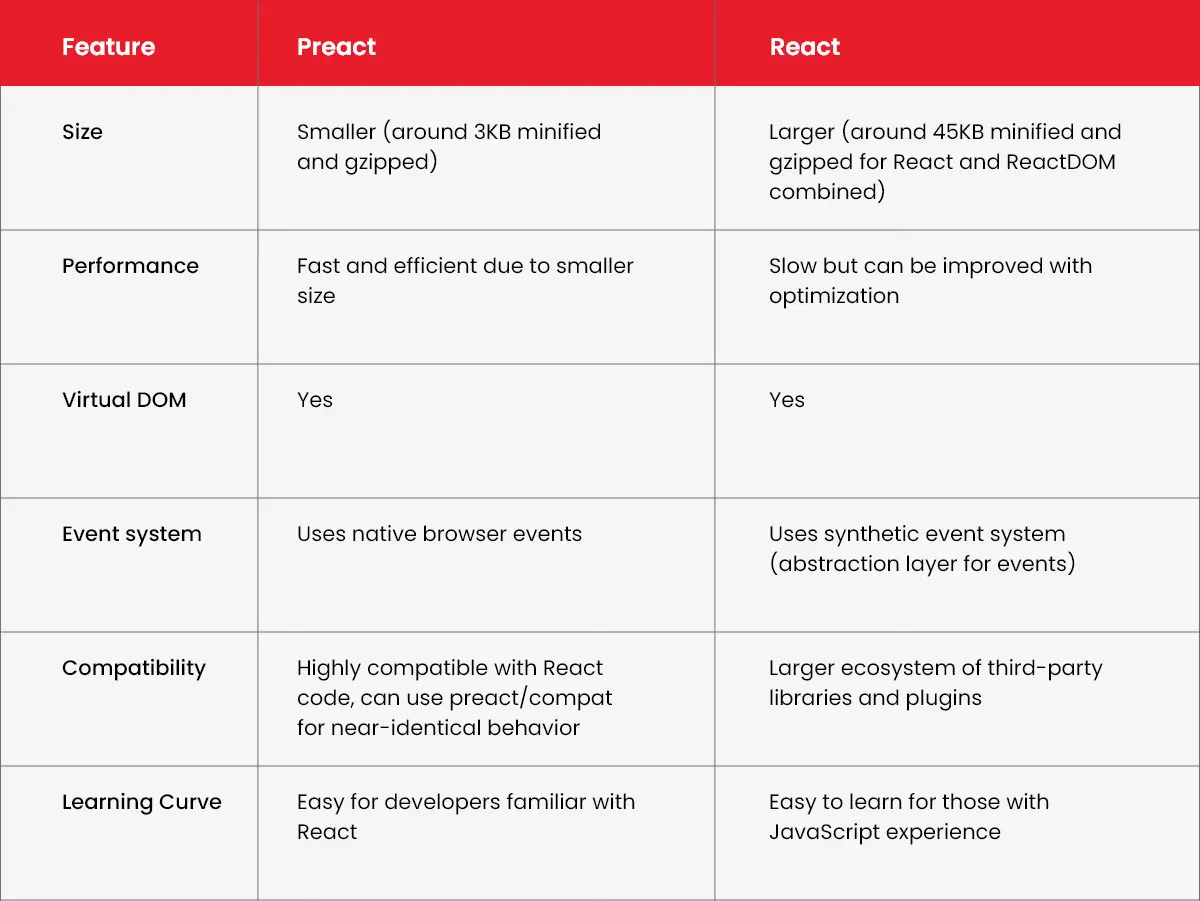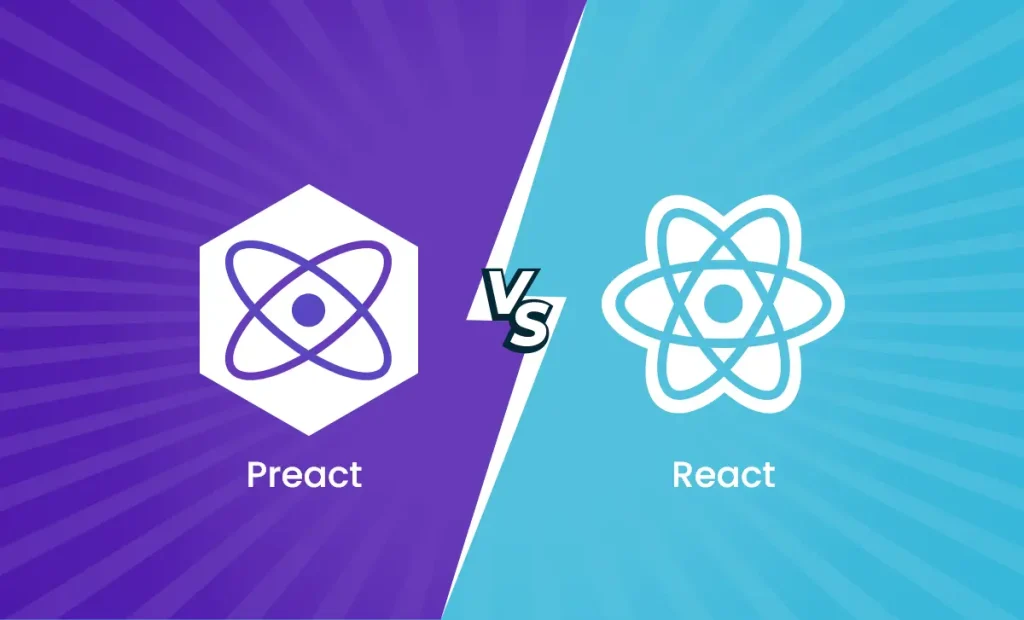To create dynamic web interfaces, you need to pick the best JavaScript library. Undoubtedly, React JS was the first choice unless Preact impressed everyone with its small and lightweight features. Both share many similarities like virtual DOM for rendering, making it harder to decide. Comparing Preact vs React will help you here. In this blog, we will see how they stand against each other in terms of functionalities, strengths, and weaknesses.

What is Preact?
Jason Miller, the man behind Preact JS, launched this framework as a lightweight alternative to React. It’s only 3kb in size, which means the JavaScript library will not take up too much space in your app.
Due to its size and speed, this framework is widely used for projects where performance and size are crucial.
Features

1. Native Support for ES Modules: Preact supports ES modules making it easier to load the library directly by using the keyword ‘import.’
2. JSX Support: You can build complex UIs in Preact by writing code in HTML language as it supports JavaScript extension.
3. Server-Side Rendering: Preact supports server-side rendering (SSR), which means fast load time and performance.
4. Virtual DOM: Preact uses the thinnest DOM to efficiently update the UI. It applies only the changes, resulting in fast and more efficient updates.
5. SVG Inside JSX: You can create complex SVG icons or illustrations by simply copying and pasting the snippets.
Pros of Preact
- Preact’s small size (3kb) makes it ideal for performance-critical applications.
- Its efficient virtual DOM implementation ensures quick updates and rendering.
- Preact is compatible with many React libraries and tools, easing the transition for React developers.
Cons of Preact
- Since Preact is only an alternative, innovation is limited as it mimics most of the functionalities of React.
- You need to add more libraries to ensure compatibility between Preact and React. This addition makes your app slow.
- There is no synthetic event handling in Preact thus your app can have performance and maintenance issues.
What is Preact Good For?
Preact is ideal for small web applications that demand high performance. It is also suitable for static sites, mobile web apps, and any application where quick load times are crucial.
Additionally, its compatibility with React makes it a good choice for projects that might eventually scale up or need to integrate with React tools and libraries.
Also Read: REST API vs RESTful API: Which is Good for Web App Development?
What is React?
In 2013, Facebook released a JavaScript library named ‘React’ JS which soon got famous among developers. Building user interfaces in this library is like using individual components and bringing them together on your app.
These components are more like functions. That means you can apply conditions and choose where to display them on your app, pages, or screens.
Features

- Virtual DOM: React JS browser compatibility enhances performance without impacting the actual DOM. It applies all the UI updates to the virtual DOM first and then calculates the most efficient way to update the real DOM.
- One-Way Data Binding: Data flows in a single direction, from parent to child components. This one-way data binding makes debugging easy as you know from where the data is coming.
- Declarative UI: Describe the UI’s state and let React handle the rendering.
- Component-Based Architecture: Reusing and maintaining components is easy as each UI component manages its own state.
- JavaScript XML (JSX): With this syntax extension, describing the UI of your app is like writing HTML code. This makes debugging a lot easier and relates to the use of JSX in React JS.
Pros
- React offers various tools, and libraries, and has an active community to support you anytime.
- It provides proper documentation and tutorials to get familiar with React.
- It can be used to build both web and mobile applications (via React Native).
Cons
- Integrating with other tools and technologies is challenging for beginners.
- It requires additional libraries to create an entire app as React handles only a part of MVC.
- Loading times are longer for complex projects.
- Performance issues may arise due to client-side rendering.
What is React Good For?
You can use the React JS library for developing web and native apps. Whether complex or simple app, it helps you build feature-rich apps that are easy to maintain and scale.
Its robust ecosystem and active community make it an even stronger choice for long-term projects that require extensive support and resources.
Also Read: Blazor vs React: Which is the Right Framework for Front-End Development?
Preact vs ReactJS Comparison

Performance
Comparing the React JS performance comparison and Preact is very important as your app’s growth depends on it.
React offers excellent performance as updating changes doesn’t impact other components. Whereas Preact’s superior performance comes from its small size.
Speed
Preact generally offers fast initial load times due to its smaller size. React, although slightly slower to load, provides powerful development tools and a richer set of features to speed up the development process.
Rendering
Both Preact JS and React use a virtual DOM for rendering. But Preact’s smaller footprint results in quicker updates in performance-sensitive applications than React.
Event Handling
Event handling in Preact is similar to React, with minor differences in implementation. React’s more extensive ecosystem provides more tools and libraries for advanced event-handling scenarios.
Hooks
React introduced hooks to allow functional components to use state and other features without writing a class. Preact supports hooks as well, but the importing process is different than React.
Conclusion
Choosing technologies and frameworks that are easy to learn and compatible with each other is very important. In the case of Preact and React JS, the choice is tough because of many similarities they share. But what separates them is the performance you can expect with the apps and overall size.
Preact is an excellent choice if you require a lightweight solution with high performance and compatibility with React.
For larger, more complex applications that benefit from a rich ecosystem and advanced features, React remains the preferred option.
FAQ
Should I use Preact instead of React?
Definitely yes if your project prioritizes performance and small bundle size otherwise choose React.
Is Preact faster than React?
Yes, the initial load times is faster in Preact than React.
What is the difference between Preact and React?
The main differences lie in their size and ecosystem. Preact is smaller and focuses on performance and compatibility, while React is larger with a more extensive ecosystem and additional features.
What is the difference between React and JavaScript?
React is a JavaScript library focused on building user interfaces. The difference between React and JavaScript lies in React’s component-based architecture and virtual DOM, whereas JavaScript is a full programming language.



